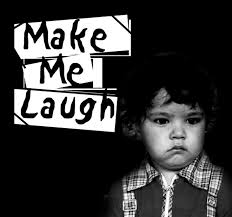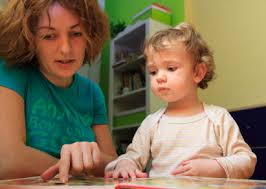
How happy are you -- really? If there’s room for improvement, then Gretchen Rubin has some suggestions. A few years ago, on a morning like any other, I had a sudden realization: I was in danger of wasting my life. As I stared out the rain-spattered window of a New York City bus, I saw that the years were slipping by. “What do I want from life?” I asked myself. “Well…I want to be happy.” I had many reasons to be happy: My husband was the tall, dark, handsome love of my life; we had two delightful girls, ages 1 and 7; I was a writer, living in my favorite city. I had friends; I had my health; I didn’t have to color my hair. But too often I sniped at my husband or the drugstore clerk. I felt dejected after even a minor professional setback. I lost my temper easily. Is that how a happy person would act?

I decided on the spot to begin a systematic study of happiness. (A little intense, I know. But that’s the kind of thing that appeals to me.) In the end, I spent a year test-driving the wisdom of the ages, current scientific studies, and tips from popular culture. If I followed all the advice, I wanted to know, would it work? Well, the year is over, and I can say: It did. I made myself happier. And along the way I learned a lot about how to be happier. Here are those lessons. 1. Don’t start with profundities. When I began my Happiness Project, I realized pretty quickly that, rather than jumping in with lengthy daily meditation or answering deep questions of self-identity, I should start with the basics, like going to sleep at a decent hour and not letting myself get too hungry. Science backs this up; these two factors have a big impact on happiness. Learn how to Get a Good Night's Sleep.

2. Do let the sun go down on anger. I had always scrupulously aired every irritation as soon as possible, to make sure I vented all bad feelings before bedtime. Studies show, however, that the notion of anger catharsis is poppycock. Expressing anger related to minor, fleeting annoyances just amplifies bad feelings, while not expressing anger often allows it to dissipate. (See 16 Ways to Manage Your Anger from Real Simple)

3. Fake it till you feel it. Feelings follow actions. If I’m feeling low, I deliberately act cheery, and I find myself actually feeling happier. If I’m feeling angry at someone, I do something thoughtful for her and my feelings toward her soften. This strategy is uncannily effective. 4. Realize that anything worth doing is worth doing badly. Challenge and novelty are key elements of happiness. The brain is stimulated by surprise, and successfully dealing with an unexpected situation gives a powerful sense of satisfaction. People who do new things — learn a game, travel to unfamiliar places — are happier than people who stick to familiar activities that they already do well. I often remind myself to “Enjoy the fun of failure” and tackle some daunting goal.

5. Don’t treat the blues with a “treat.” Often the things I choose as “treats” aren’t good for me. The pleasure lasts a minute, but then feelings of guilt and loss of control and other negative consequences deepen the lousiness of the day. While it’s easy to think, I’ll feel good after I have a few glasses of wine…a pint of ice cream…a cigarette…a new pair of jeans, it’s worth pausing to ask whether this will truly make things better. 6. Buy some happiness. Our basic psychological needs include feeling loved, secure, and good at what we do and having a sense of control. Money doesn’t automatically fill these requirements, but it sure can help. I’ve learned to look for ways to spend money to stay in closer contact with my family and friends; to promote my health; to work more efficiently; to eliminate sources of irritation and marital conflict; to support important causes; and to have enlarging experiences. For example, when my sister got married, I splurged on a better digital camera. It was expensive, but it gave me a lot of happiness bang for the buck. 7. Don’t insist on the best. There are two types of decision makers. Satisfiers (yes, satisfiers) make a decision once their criteria are met. When they find the hotel or the pasta sauce that has the qualities they want, they’re satisfied. Maximizers want to make the best possible decision. Even if they see a bicycle or a backpack that meets their requirements, they can’t make a decision until they’ve examined every option. Satisficers tend to be happier than maximizers. Maximizers expend more time and energy reaching decisions, and they’re often anxious about their choices. Sometimes good enough is good enough. 8. Exercise to boost energy. I knew, intellectually, that this worked, but how often have I told myself, “I’m just too tired to go to the gym”? Exercise is one of the most dependable mood-boosters. Even a 10-minute walk can brighten my outlook. Try one of these 15-Minute Workouts. 9. Stop nagging. I knew my nagging wasn’t working particularly well, but I figured that if I stopped, my husband would never do a thing around the house. Wrong. If anything, more work got done. Plus, I got a surprisingly big happiness boost from quitting nagging. I hadn’t realized how shrewish and angry I had felt as a result of speaking like that. I replaced nagging with the following persuasive tools: wordless hints (for example, leaving a new light bulb on the counter); using just one word (saying “Milk!” instead of talking on and on); not insisting that something be done on my schedule; and, most effective of all, doing a task myself. Why did I get to set the assignments?

10. Take action. Some people assume happiness is mostly a matter of inborn temperament: You’re born an Eeyore or a Tigger, and that’s that. Although it’s true that genetics play a big role, about 40 percent of your happiness level is within your control. Taking time to reflect, and conscious steps to make your life happier, really does work. So use these tips to start your own Happiness Project. I promise it won’t take you a whole year.

 How happy are you -- really? If there’s room for improvement, then Gretchen Rubin has some suggestions. A few years ago, on a morning like any other, I had a sudden realization: I was in danger of wasting my life. As I stared out the rain-spattered window of a New York City bus, I saw that the years were slipping by. “What do I want from life?” I asked myself. “Well…I want to be happy.” I had many reasons to be happy: My husband was the tall, dark, handsome love of my life; we had two delightful girls, ages 1 and 7; I was a writer, living in my favorite city. I had friends; I had my health; I didn’t have to color my hair. But too often I sniped at my husband or the drugstore clerk. I felt dejected after even a minor professional setback. I lost my temper easily. Is that how a happy person would act?
How happy are you -- really? If there’s room for improvement, then Gretchen Rubin has some suggestions. A few years ago, on a morning like any other, I had a sudden realization: I was in danger of wasting my life. As I stared out the rain-spattered window of a New York City bus, I saw that the years were slipping by. “What do I want from life?” I asked myself. “Well…I want to be happy.” I had many reasons to be happy: My husband was the tall, dark, handsome love of my life; we had two delightful girls, ages 1 and 7; I was a writer, living in my favorite city. I had friends; I had my health; I didn’t have to color my hair. But too often I sniped at my husband or the drugstore clerk. I felt dejected after even a minor professional setback. I lost my temper easily. Is that how a happy person would act?  I decided on the spot to begin a systematic study of happiness. (A little intense, I know. But that’s the kind of thing that appeals to me.) In the end, I spent a year test-driving the wisdom of the ages, current scientific studies, and tips from popular culture. If I followed all the advice, I wanted to know, would it work? Well, the year is over, and I can say: It did. I made myself happier. And along the way I learned a lot about how to be happier. Here are those lessons. 1. Don’t start with profundities. When I began my Happiness Project, I realized pretty quickly that, rather than jumping in with lengthy daily meditation or answering deep questions of self-identity, I should start with the basics, like going to sleep at a decent hour and not letting myself get too hungry. Science backs this up; these two factors have a big impact on happiness. Learn how to Get a Good Night's Sleep.
I decided on the spot to begin a systematic study of happiness. (A little intense, I know. But that’s the kind of thing that appeals to me.) In the end, I spent a year test-driving the wisdom of the ages, current scientific studies, and tips from popular culture. If I followed all the advice, I wanted to know, would it work? Well, the year is over, and I can say: It did. I made myself happier. And along the way I learned a lot about how to be happier. Here are those lessons. 1. Don’t start with profundities. When I began my Happiness Project, I realized pretty quickly that, rather than jumping in with lengthy daily meditation or answering deep questions of self-identity, I should start with the basics, like going to sleep at a decent hour and not letting myself get too hungry. Science backs this up; these two factors have a big impact on happiness. Learn how to Get a Good Night's Sleep.  2. Do let the sun go down on anger. I had always scrupulously aired every irritation as soon as possible, to make sure I vented all bad feelings before bedtime. Studies show, however, that the notion of anger catharsis is poppycock. Expressing anger related to minor, fleeting annoyances just amplifies bad feelings, while not expressing anger often allows it to dissipate. (See 16 Ways to Manage Your Anger from Real Simple)
2. Do let the sun go down on anger. I had always scrupulously aired every irritation as soon as possible, to make sure I vented all bad feelings before bedtime. Studies show, however, that the notion of anger catharsis is poppycock. Expressing anger related to minor, fleeting annoyances just amplifies bad feelings, while not expressing anger often allows it to dissipate. (See 16 Ways to Manage Your Anger from Real Simple)  3. Fake it till you feel it. Feelings follow actions. If I’m feeling low, I deliberately act cheery, and I find myself actually feeling happier. If I’m feeling angry at someone, I do something thoughtful for her and my feelings toward her soften. This strategy is uncannily effective. 4. Realize that anything worth doing is worth doing badly. Challenge and novelty are key elements of happiness. The brain is stimulated by surprise, and successfully dealing with an unexpected situation gives a powerful sense of satisfaction. People who do new things — learn a game, travel to unfamiliar places — are happier than people who stick to familiar activities that they already do well. I often remind myself to “Enjoy the fun of failure” and tackle some daunting goal.
3. Fake it till you feel it. Feelings follow actions. If I’m feeling low, I deliberately act cheery, and I find myself actually feeling happier. If I’m feeling angry at someone, I do something thoughtful for her and my feelings toward her soften. This strategy is uncannily effective. 4. Realize that anything worth doing is worth doing badly. Challenge and novelty are key elements of happiness. The brain is stimulated by surprise, and successfully dealing with an unexpected situation gives a powerful sense of satisfaction. People who do new things — learn a game, travel to unfamiliar places — are happier than people who stick to familiar activities that they already do well. I often remind myself to “Enjoy the fun of failure” and tackle some daunting goal.  5. Don’t treat the blues with a “treat.” Often the things I choose as “treats” aren’t good for me. The pleasure lasts a minute, but then feelings of guilt and loss of control and other negative consequences deepen the lousiness of the day. While it’s easy to think, I’ll feel good after I have a few glasses of wine…a pint of ice cream…a cigarette…a new pair of jeans, it’s worth pausing to ask whether this will truly make things better. 6. Buy some happiness. Our basic psychological needs include feeling loved, secure, and good at what we do and having a sense of control. Money doesn’t automatically fill these requirements, but it sure can help. I’ve learned to look for ways to spend money to stay in closer contact with my family and friends; to promote my health; to work more efficiently; to eliminate sources of irritation and marital conflict; to support important causes; and to have enlarging experiences. For example, when my sister got married, I splurged on a better digital camera. It was expensive, but it gave me a lot of happiness bang for the buck. 7. Don’t insist on the best. There are two types of decision makers. Satisfiers (yes, satisfiers) make a decision once their criteria are met. When they find the hotel or the pasta sauce that has the qualities they want, they’re satisfied. Maximizers want to make the best possible decision. Even if they see a bicycle or a backpack that meets their requirements, they can’t make a decision until they’ve examined every option. Satisficers tend to be happier than maximizers. Maximizers expend more time and energy reaching decisions, and they’re often anxious about their choices. Sometimes good enough is good enough. 8. Exercise to boost energy. I knew, intellectually, that this worked, but how often have I told myself, “I’m just too tired to go to the gym”? Exercise is one of the most dependable mood-boosters. Even a 10-minute walk can brighten my outlook. Try one of these 15-Minute Workouts. 9. Stop nagging. I knew my nagging wasn’t working particularly well, but I figured that if I stopped, my husband would never do a thing around the house. Wrong. If anything, more work got done. Plus, I got a surprisingly big happiness boost from quitting nagging. I hadn’t realized how shrewish and angry I had felt as a result of speaking like that. I replaced nagging with the following persuasive tools: wordless hints (for example, leaving a new light bulb on the counter); using just one word (saying “Milk!” instead of talking on and on); not insisting that something be done on my schedule; and, most effective of all, doing a task myself. Why did I get to set the assignments?
5. Don’t treat the blues with a “treat.” Often the things I choose as “treats” aren’t good for me. The pleasure lasts a minute, but then feelings of guilt and loss of control and other negative consequences deepen the lousiness of the day. While it’s easy to think, I’ll feel good after I have a few glasses of wine…a pint of ice cream…a cigarette…a new pair of jeans, it’s worth pausing to ask whether this will truly make things better. 6. Buy some happiness. Our basic psychological needs include feeling loved, secure, and good at what we do and having a sense of control. Money doesn’t automatically fill these requirements, but it sure can help. I’ve learned to look for ways to spend money to stay in closer contact with my family and friends; to promote my health; to work more efficiently; to eliminate sources of irritation and marital conflict; to support important causes; and to have enlarging experiences. For example, when my sister got married, I splurged on a better digital camera. It was expensive, but it gave me a lot of happiness bang for the buck. 7. Don’t insist on the best. There are two types of decision makers. Satisfiers (yes, satisfiers) make a decision once their criteria are met. When they find the hotel or the pasta sauce that has the qualities they want, they’re satisfied. Maximizers want to make the best possible decision. Even if they see a bicycle or a backpack that meets their requirements, they can’t make a decision until they’ve examined every option. Satisficers tend to be happier than maximizers. Maximizers expend more time and energy reaching decisions, and they’re often anxious about their choices. Sometimes good enough is good enough. 8. Exercise to boost energy. I knew, intellectually, that this worked, but how often have I told myself, “I’m just too tired to go to the gym”? Exercise is one of the most dependable mood-boosters. Even a 10-minute walk can brighten my outlook. Try one of these 15-Minute Workouts. 9. Stop nagging. I knew my nagging wasn’t working particularly well, but I figured that if I stopped, my husband would never do a thing around the house. Wrong. If anything, more work got done. Plus, I got a surprisingly big happiness boost from quitting nagging. I hadn’t realized how shrewish and angry I had felt as a result of speaking like that. I replaced nagging with the following persuasive tools: wordless hints (for example, leaving a new light bulb on the counter); using just one word (saying “Milk!” instead of talking on and on); not insisting that something be done on my schedule; and, most effective of all, doing a task myself. Why did I get to set the assignments?  10. Take action. Some people assume happiness is mostly a matter of inborn temperament: You’re born an Eeyore or a Tigger, and that’s that. Although it’s true that genetics play a big role, about 40 percent of your happiness level is within your control. Taking time to reflect, and conscious steps to make your life happier, really does work. So use these tips to start your own Happiness Project. I promise it won’t take you a whole year.
10. Take action. Some people assume happiness is mostly a matter of inborn temperament: You’re born an Eeyore or a Tigger, and that’s that. Although it’s true that genetics play a big role, about 40 percent of your happiness level is within your control. Taking time to reflect, and conscious steps to make your life happier, really does work. So use these tips to start your own Happiness Project. I promise it won’t take you a whole year. 






















